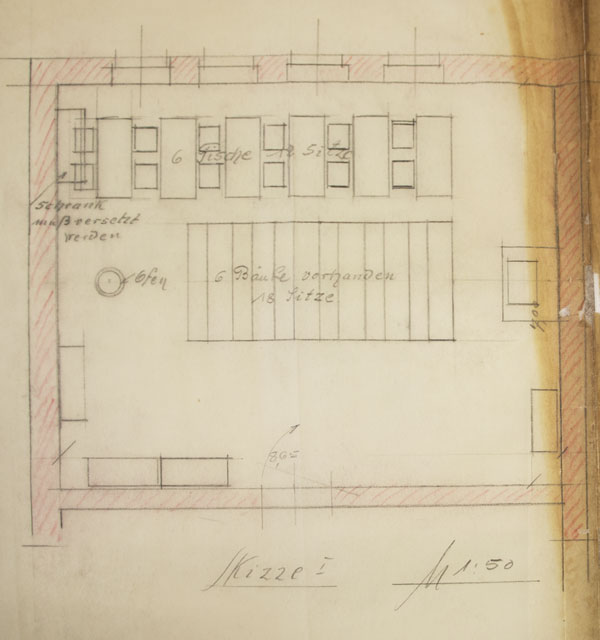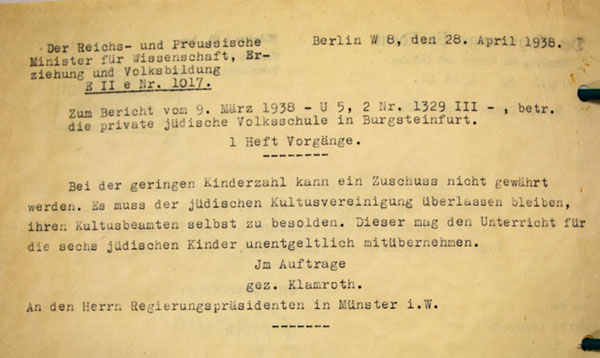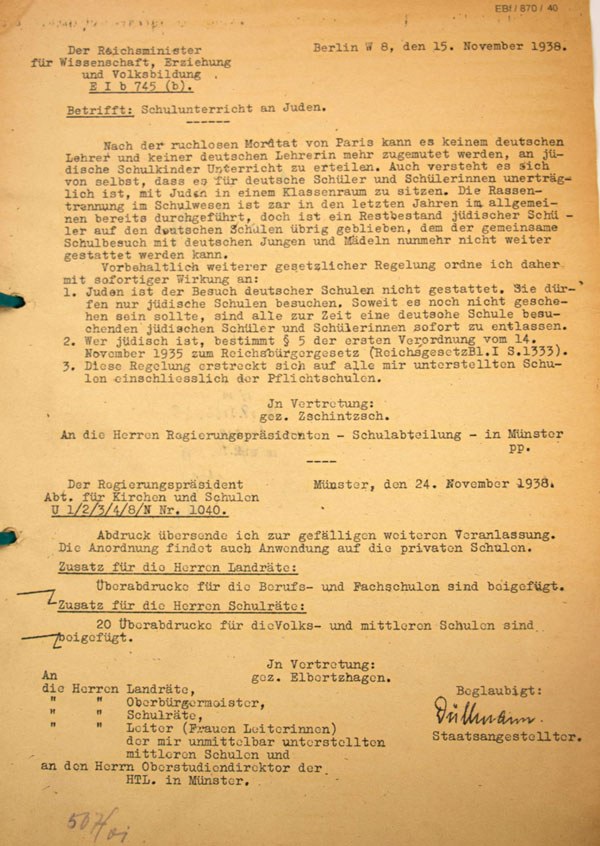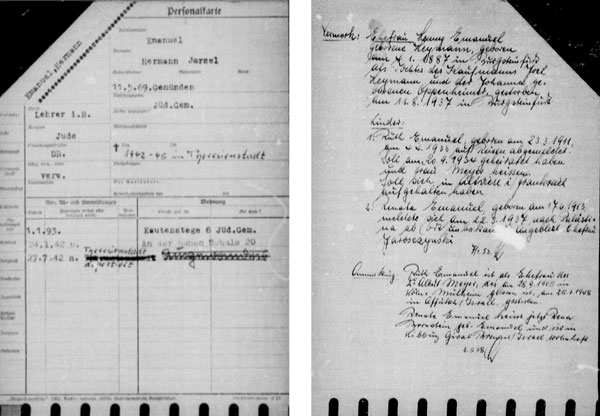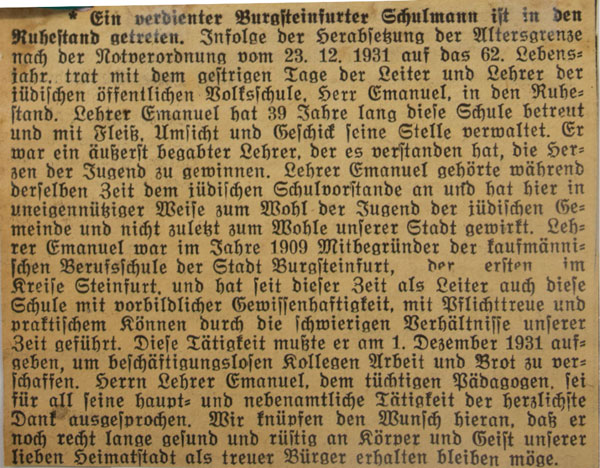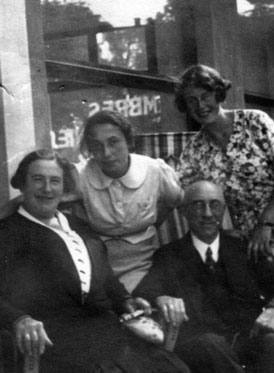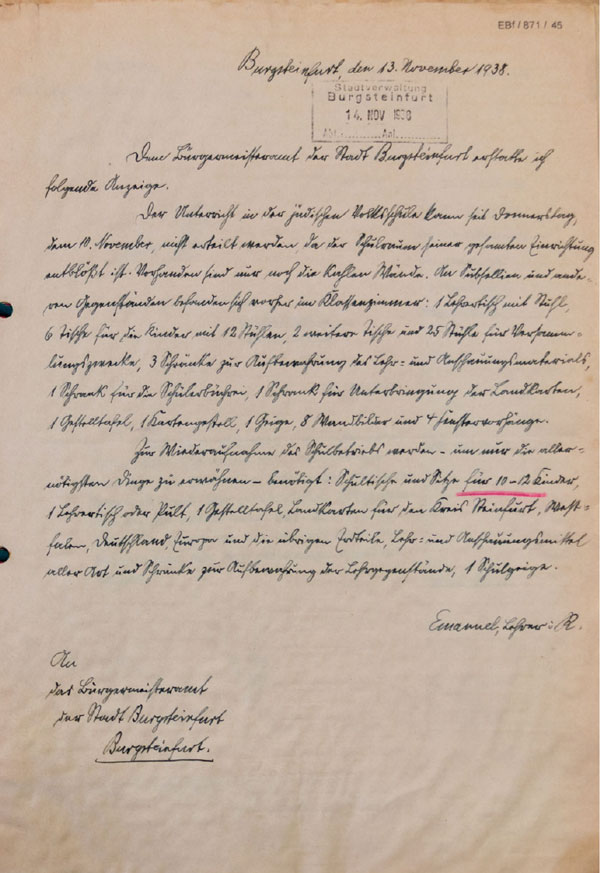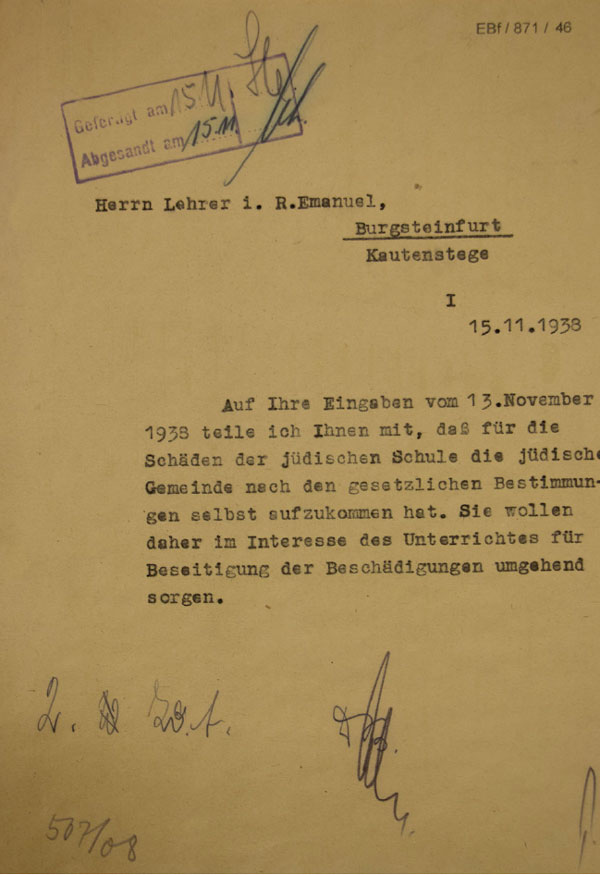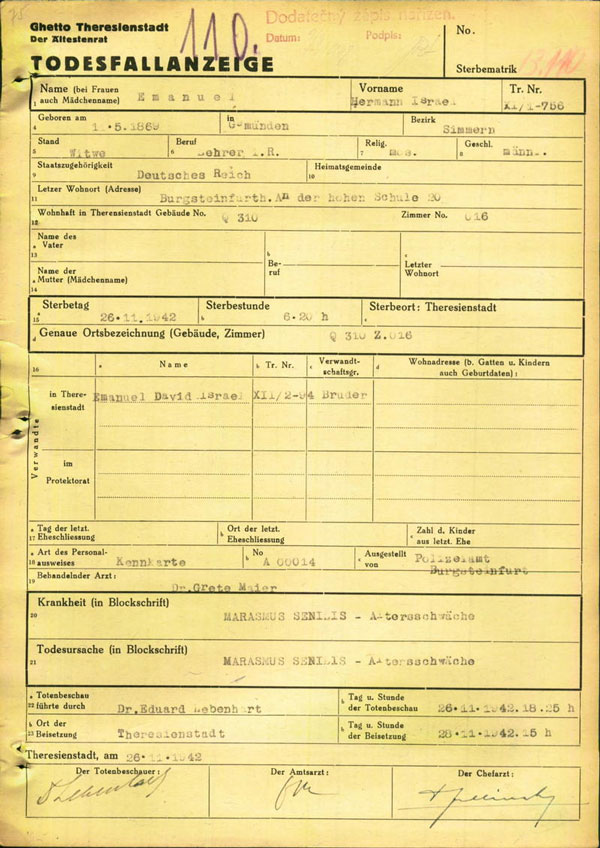History of the Jewish school in Burgsteinfurt and its last teacher
Continue
here
The school building
1888
The school building on the property next to the synagogue was acquired in the late summer of 1888. It consisted of three floors. Downstairs was simply one large room, the schoolroom. Upstairs was the teacher’s flat with five rooms; and, above that, the attic. Laundry and toilet facilities (privy and urinal) were installed outside the house.
1893
Hermann Emanuel took over as teacher and cantor in 1893, teaching 40-50 children to begin with. The turn of the century saw the community beginning to shrink due to emigration, with only six children attending the school around 1930.
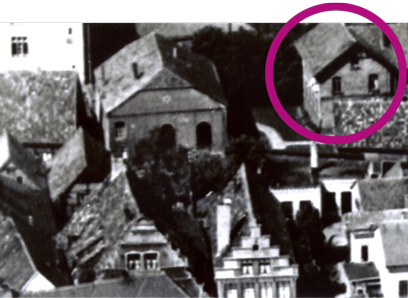
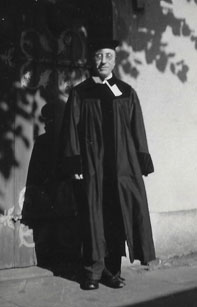
Hermann Emanuel, presumably in front of the synagogue on Kautenstege; private possession of Ruth Mazaki
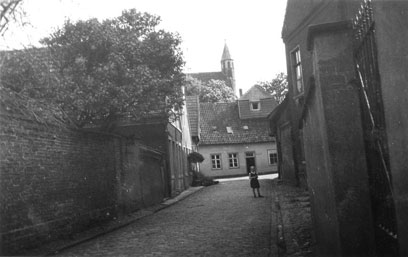
1932
Hermann Emanuel was forced into retirement in 1932. The government then dissolved the Jewish elementary school as a state school, but allowed it to continue as a private educational establishment. Soon the dwindling and increasingly poor community was forced to apply for regular financial support from the Nazi state.
“The parents of all school-age children are without exception unable to pay even small contributions in school fees due to their economic circumstances”.
1938
Mayor Schumann spoke in favour of a grant:
“The possibility alone, however, that the Jews might dissolve their school and then the children of a different species and race would have to be together with German-blooded children … for years in one room, seems to me sufficient to justify a financial grant to avoid an … intolerable situation”.
The request was nevertheless rejected.
Denizens of Burgsteinfurt set fire to the synagogue in November 1938. It burned down, and the school building next to it was laid to waste. The school was repaired provisionally, because, in line with the decree of the Reich Minister for Science, Education and National Education of 15 November 1938, Jews were no longer allowed to attend German schools.
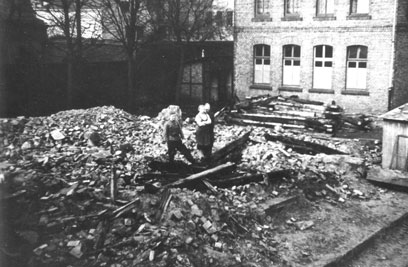
in the background, the looted Jewish school
1941
Teacher Emanuel taught pupils from Burgsteinfurt and the surrounding villages until mid-1941. When the ban was issued preventing the teaching of Jewish children, the school was closed. Synagogenplatz and the school building were then bought by the town of Burgsteinfurt.
1942
The last citizens of Jewish faith living in Burgsteinfurt, including Hermann Emanuel, were deported to Theresienstadt in July 1942.
While much of the old town centre was destroyed in the war, the school building, which had been converted into a block of rented flats, remained almost intact.
Burgsteinfurt was thus “free of Jews”.
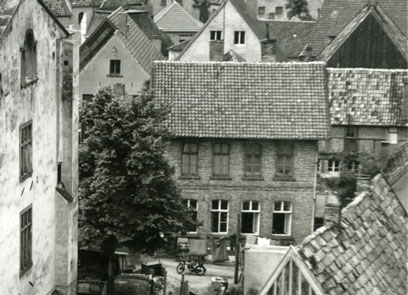
c. 1950/on the left is the Hohe Schule; photo, Kiepker-Balzer
The property at Synagogenplatz and at the Jewish school was initially transferred back to the legal successor of the Jewish community of Burgsteinfurt after the war as part of the reparations. The town acquired the entire property again in 1953.
Synagogenplatz was soon transformed into a memorial and has been a listed building since 1997. The school building is still used as a block of rented flats today. The former Jewish school was entered in the list of the town of Steinfurt’s memorials in February 2015.
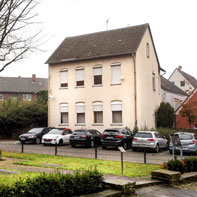
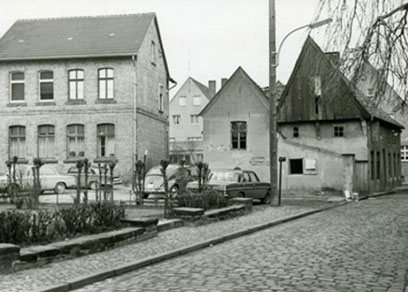
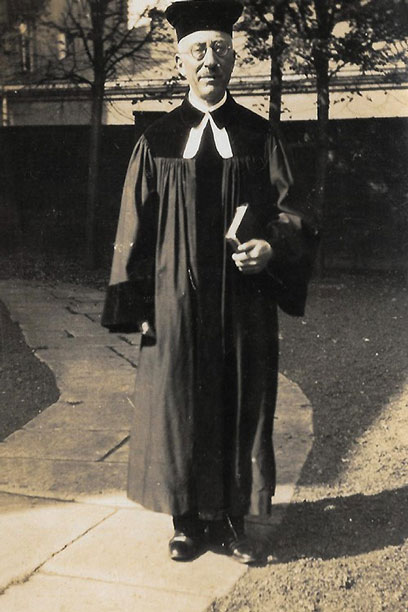
Hermann Emanuel
The last teacher and cantor of the Jewish community in Burgsteinfurt
Hermann Emanuel began as a teacher and cantor in the Jewish community of Burgsteinfurt in 1893. He had completed his education in a neo-orthodox seminary in Cologne, and now came to a community that was somewhat liberal. Quite a few members of the community opened their shops on the Sabbath and went about their professional duties. They spent a lot of time in Burgsteinfurt’s town community and largely conformed to their surroundings. This situation was certainly somewhat difficult for the conservative Hermann Emanuel initially, but he faced all the challenges with empathy and pragmatism, and won the respect of his community and the citizens of Burgsteinfurt. The town established a training school teaching commerce in 1909, where until 1931 Hermann Emanuel worked as director and teacher after receiving further professional training. He retained his position as cantor and teacher at the Jewish school.
Brüning’s “emergency decrees” forced Hermann Emanuel to retire early on 1 April 1932. At the same time, the ministry dissolved the Jewish school as a state school, but allowed it to continue as a private educational establishment under Hermann Emanuel’s leadership. The Steinfurter Kreisblatt published an appreciation of his work the next day:
“A deserving Burgsteinfurt schoolman has retired”.
He had married Henny Heimann, the daughter of a Burgsteinfurt businessman, in 1906, and started a family with her. Their daughters Ruth and Renata were well educated and did their A-levels at a grammar school in Münster. Ruth began studying in Münster, and Renata trained as a horticulturalist in Potsdam. However, after the National Socialists came to power, they no longer saw any prospects for themselves in Germany and emigrated to Palestine. His wife Henny died of liver cancer in 1937. Hermann Emanuel rejected his daughter Renata’s proposal to join her in Palestine, saying that he wished to remain with his community.
He was therefore forced to witness the night of the pogrom, when houses belonging to members of his community, as well as the school building and the synagogue, were laid to waste. The following day also saw the synagogue being torched and burnt to the ground. Despite the humiliations and threats, Hermann Emanuel turned to the mayor and demanded recourse – without success.
The riots were followed by numerous measures that excluded the Jews from society and deprived them of any means of livelihood. They were
“disenfranchised and impoverished, decimated and aged, separated from family members and cut off from the outside world, obliged to perform forced labour and crowded into ‘Jew houses’, malnourished and exhausted, restricted in freedom of movement, and marked by a star the size of a palm”.
[Konrad Kwiet 1988]
From December 1941, the Jews remaining in Burgsteinfurt were gradually deported to the concentration camps. The third and last transport deported Hermann Emanuel to the “ghetto for the elderly”, Theresienstadt, on 27 July 1942, where he died on 26 November 1942.
Idea and text: Irmgard Walbaum
Coordination: Nina Nolte
Photos: Kiepker-Balzer, Günther Hilgemann, Nina Nolte, Andreas Wessendorf
Sources: Steinfurt municipal archives, Institute Theresienstätter Initiative
The texts draw on writings by Willi Feld:
Willi Feld: “… daß die hiesigen Juden für Steinfurt wichtig sind” – Die Juden in der Geschichte der ehemaligen Stadt Burgsteinfurt – 2nd revised edition, Berlin 2009.
Willi Feld: Lebensbilder – Die Juden in der ehemaligen Stadt Burgsteinfurt, Part II, Münster 2004.
